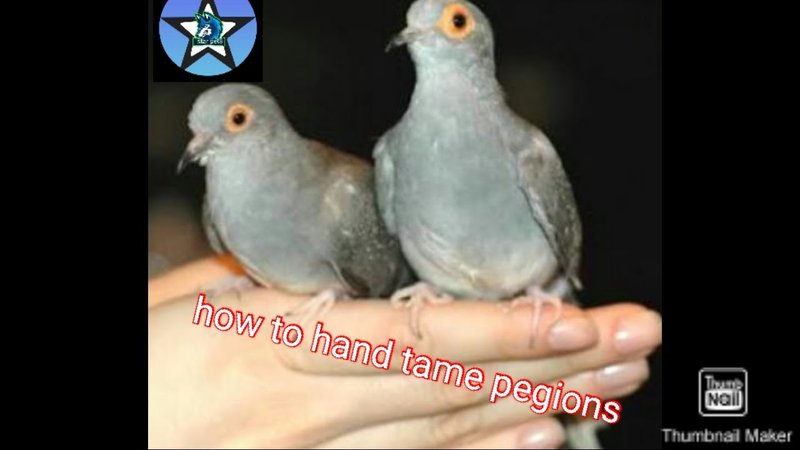
To get started, it’s important to know that doves are naturally gentle and social creatures. They often thrive on companionship, whether it’s from their fellow doves or from their human friends. Just like teaching a puppy tricks or getting a cat to come when called, there’s a method to the madness. You might wonder why some birds seem more approachable than others; it really comes down to their upbringing and experiences. So, let’s dive into the world of dove training and see how you can create a loving bond with your feathery friend.
Understanding Your Dove’s Nature
Before you embark on the training journey, it’s essential to understand your dove’s natural behavior. Doves are generally peaceful birds, often characterized by their calm demeanor. They thrive in environments where they feel safe and secure. Think of your dove as a little explorer; it needs a safe space to venture out and learn about the world around it.
Doves are also social birds. They don’t just want to exist alongside you; they crave interaction and connection. When you provide them with a loving environment, they’ll likely respond positively. You might be wondering how to create this safe space. Consider reducing loud noises and sudden movements to help your dove feel more at ease. A quiet room with a comfortable perch and a few toys is an excellent starting point for your training efforts.
Another aspect to keep in mind is that doves are creatures of habit. They thrive on routine, which can be beneficial for training. Establishing a consistent schedule for feeding and interaction can help your dove feel more secure and willing to engage with you.
Creating a Comfortable Environment
To train your dove effectively, you must first create a comfortable environment. Start by choosing a quiet room in your house, away from loud distractions. This can be a cozy corner of your living room or a dedicated space just for your feathered friend. The goal is to make your dove feel safe and relaxed in its surroundings.
Next, consider the setup of the habitat. A spacious cage is a must, as doves need room to move around. Inside the cage, add perches at different heights, toys to peck and explore, and a cozy nesting area. These features will make your dove feel more at home. If you plan to let your dove roam outside of its cage, ensure the area is free of hazards, like open windows or toxic plants.
Once the environment is set up, spend time sitting near the cage to allow your dove to get used to your presence. You might even want to read aloud or talk softly to it. This helps create familiarity and comfort. Remember, patience is crucial here. It may take a few days for your dove to feel secure enough to approach you, but that’s completely normal.
Building Trust With Your Dove
Building trust with your dove is like establishing a solid foundation for a friendship. Start by letting your dove get accustomed to you before trying to handle it. You could sit quietly near its cage for a while, allowing it to observe you without pressure. This gradual introduction helps your dove associate your presence with safety.
Once your dove seems comfortable, you can begin offering treats. Small pieces of millet or seeds work well. Hold the treats in your hand, allowing the dove to come to you. This simple action can be a significant step in building trust. Over time, your dove will recognize that you are a source of good things, which can encourage it to venture closer.
As your dove becomes more comfortable, you can try gently extending your hand inside the cage. Move slowly and calmly, and avoid sudden movements. Your dove may be shy at first, but with patience, it might hop onto your hand for treats. This moment is a huge milestone in your training! Celebrate these little victories—they’re stepping stones toward a trusting relationship.
Hand-Taming Your Dove
Now that you’ve built some trust, it’s time to work on hand-taming. Start by spending short, daily sessions with your dove. Consistency is key. These sessions can last anywhere from 5 to 15 minutes, depending on your dove’s comfort level. Begin by offering treats from your hand, as this encourages your dove to associate you with positive experiences.
Once your dove is comfortable eating from your hand, you can encourage it to step up onto your finger. With your palm open and finger extended, gently coax your dove by placing a treat on your fingertip. If it hesitates, be patient and let it take its time. Be sure to celebrate any small advances—like your dove inching closer—because this builds its confidence.
Remember, patience is vital during this process. It’s completely normal for some doves to take longer than others to get comfortable with hand-taming. If your dove seems stressed or anxious, give it a break and try again later. Training should be a positive experience for both of you, so keep things light and fun!
Encouraging Affection and Interaction
As your dove becomes more hand-tame, you can start nurturing affectionate interactions. This includes gentle petting and interacting outside the cage. Begin by allowing your dove to perch on your finger or shoulder while you move around your home. This can help it feel secure and engaged in your daily life.
You might also want to introduce toys or activities that encourage bonding. For example, offering a small, safe toy can invite playfulness while also allowing your dove to explore. Playing together can be a fantastic way to strengthen your relationship. Doves enjoy gentle games, so be sure to keep them light-hearted.
It’s essential to read your dove’s body language during these interactions. If it seems relaxed and curious, you’re on the right track! However, if it appears agitated or attempts to fly away, it may need a little more space. Each dove is unique, and getting to know its quirks will help you foster a deeper connection.
Maintaining and Reinforcing Training
Training your dove isn’t a one-time project; it’s an ongoing journey. Even after successfully hand-taming and building trust, continue to reinforce these behaviors through regular interaction. Consistency is crucial to maintain the bond you’ve built. Aim for short daily sessions where you continue to offer treats and engage in gentle handling.
As your dove becomes more accustomed to you, you can introduce new challenges or activities. For instance, teaching it to come when called can be a fun way to strengthen your relationship. Use a specific sound or word, and reward your dove with treats when it responds. Over time, it will learn to associate that cue with positive experiences.
Don’t forget to monitor your dove’s mood and well-being. If it seems less interested in interacting, it might be feeling stressed or unwell. Regularly engaging in gentle interaction can help keep your dove feeling secure and loved. Remember, training is about building a lifelong friendship, so take your time and enjoy the process!
Common Challenges and Solutions
Like any training journey, you might encounter challenges along the way. One common issue is fear or anxiety. If your dove seems scared when you approach, don’t force interaction. Instead, take a step back and allow it to come to you at its own pace. You can also try using treats to encourage a more positive association with your presence.
Another challenge might be your dove’s resistance to stepping up onto your finger. If it consistently hesitates, try using a perch or a stick for initial training. This approach can give your dove a more comfortable way to step onto your hand without feeling overwhelmed.
Finally, patience is essential. Every dove is unique. Some may take longer than others to warm up to humans. Don’t get discouraged; slow and steady wins the race. Keep the training sessions positive and fun, and remember, building a bond takes time.
In conclusion, training your dove to be hand-tame and friendly is a beautiful experience that deepens the connection between you and your feathered companion. By understanding their nature, creating a comfortable environment, and building trust, you can cultivate a loving relationship. Enjoy the journey, celebrate the milestones, and always be patient—your efforts will surely pay off. After all, nothing beats the joy of having a hand-tame dove perched happily on your shoulder, sharing the world with you!

